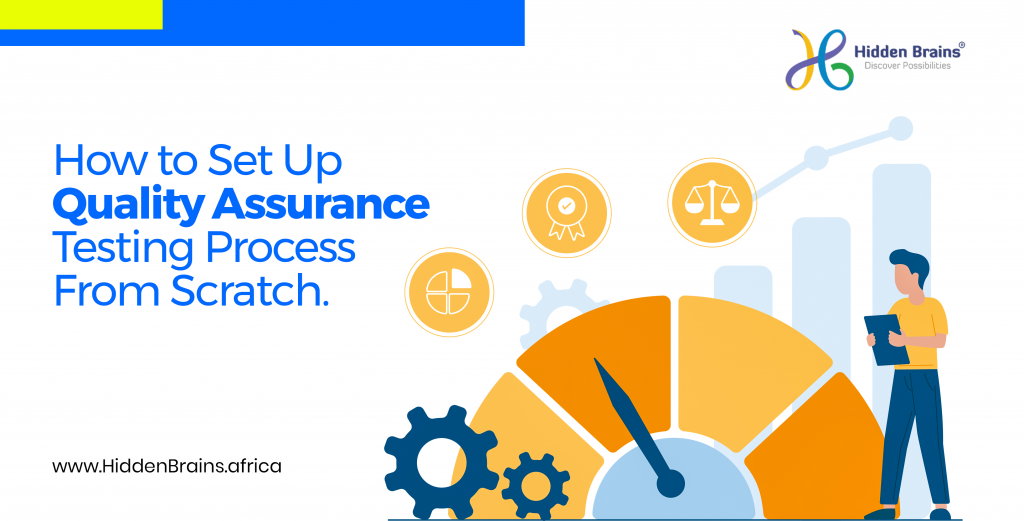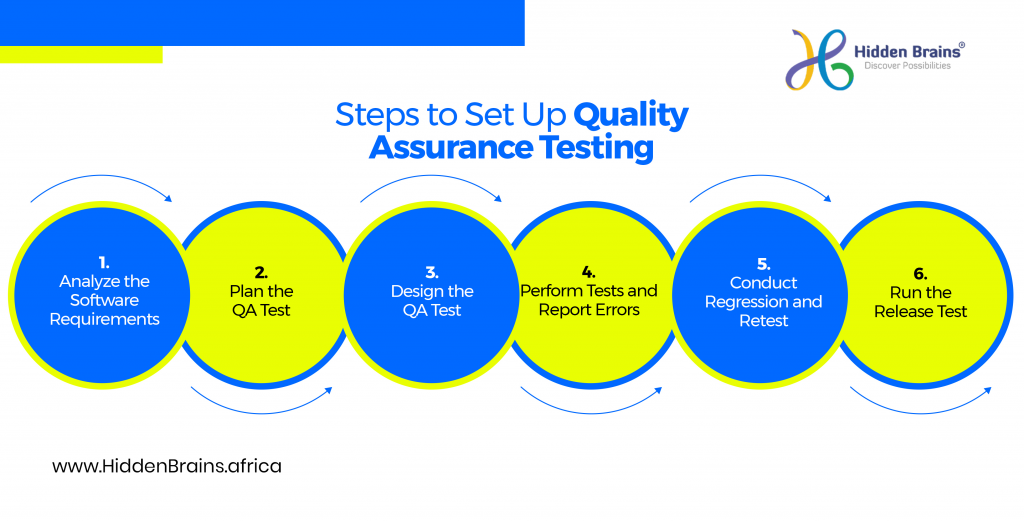
Imagine you want to gift your mum a brand-new phone, and upon arriving at a dealer’s shop or a shopping mall, you meet a salesperson who decides to show you the available products. You went with the expectation of getting a particular model; you sighted the name tag and placed your order.
You received the phone and began to scroll through it. It turns out you cannot set the date, the user interface isn’t attractive, and the phone properties are hard to find. There is a tendency that you would not purchase that specific model again.
This is how a product without a QA test disrupts the process of purchase, driving customers to anger and frustration. A product launched without quality testing is like a phone with an unfriendly interface – it causes nothing but stress.
An example is a website that looks good at first glance. However, as you scroll down, you observe some design flaws and you are unable to navigate its pages. Such failures are caused by a lack of a Quality Assurance test.
This could lead to consistent breakdowns and malfunctions. And it occurs when projects are designed with little time to run the test or probably a lack of quality testing standards that were not adhered to.
This article contains a step-by-step process you can take to set up a standard quality assurance test.
What is Quality Assurance Testing
Quality Assurance (QA) is the method of improving a product’s quality and the range of testing activities used to detect and fix technical issues. QA is the process developers employ to ascertain and assure the quality of a software product or service before releasing it to customers.
The test involves discovering bugs, fixing them, verifying logical flow, guaranteeing a seamless user interface and user experience, and anticipating and cracking unexpected software defects.
Quality Assurance is inspected and evaluated in different scopes:
- Transcendental scope: This view recognises quality but does not measure it.
- User scope: This view also tells how the user perceives and understands the software quality.
- Product scope: This is the confirmation of the requirement in line with the internal and inherent characteristics of the software.
- Value-based scope: This conveys how satisfied the stakeholders and associates understand the quality of the software.
These different scopes are a crucial part of the Quality Assurance test process. Once the products have been tested and confirmed efficient, the software will function at a high level, boosting customer confidence and trust in the business or organisation. Remember, high-quality products impact satisfied customers and influence customer loyalty.
The Essence of QA Test
Quality Assurance is crucial to setting up adequate techniques and presenting the standards of quality to prevent errors in programming products. Using the techniques will ensure all mistakes are detected earlier and fixed to avoid complete failure of the product.
QA is conducted throughout the process of developing software to ensure the teams and developers meet the time slated for the project by performing the necessary tests at all design levels. One major advantage of implementing QA is that it saves the cost of detecting bugs after a product has been released, saving time.
An organisation or a business will not make any profit by launching a faulty product. It is one of the reasons every organisation should focus on implementing a standard quality assurance test. When a product software aligns with the quality standard, the organisation’s profits will surely increase.
Quality assurance is necessary to execute every product to prevent the organisation from losing potential clients. Aside from the loss of sales and customers, the risk of its failure could be too high. According to research, too many software failures have led to casualties and billions of dollars to fix or pay for damages. QA helps organisations have good reputations. It helps them stand out among their competitors.
The Steps to Setting up QA Testing
Software development involves a standard procedure known as the ‘Software development life cycle’ (SDLC). Quality assurance is part of the life cycle of software, and it is the procedure required in the process of developing a quality product

Let’s take a look at the steps involved in a Quality Assurance test:
Analyze the Software Requirements
The first stage in the quality assurance process is analysing software requirements. In this process, the developer takes all essential details from the client and analyses them as a guide to predicting the roadmap for product development. An SRS – software requirement specification that ensures the requirements are precise, compatible, extensive and measurable.
Plan the QA Testing
After analysing the requirements, the next step is to plan the testing process. This stage requires specific actions that the developing team will act on to develop a strategy for proceeding with this process. However, the most crucial component of this stage is the strategic development of a plan.
Different classifications of tests are required in the software development life cycle, and the quality assurance team will ensure that all tests are seamlessly executed and quality is produced. Some types of tests are – smoke testing, cross-platform testing, load testing, regression testing, integration testing, unit testing, performance testing, security testing and many more.
You can imagine all the tests required to ensure you have the best quality product. If this is your concern, then there’s no issue. All you have to do is contact Hidden Brains for your product’s quality testing. We take off the burdens of several tests from you and produce efficient, high-standard software that will suit your customers and increase their satisfaction.
Design the QA Testing
At this stage, the quality assurance team will build test cases and lists that cover the software requirements. The test cases will provide the test data, circumstances, and methods needed to validate precise roles and outcomes. Test documentation is a must in this stage to ensure that the test plans go in the right direction.
This stage can have two types of testing, manual and automated testing. In manual testing, all the testing scenarios are set manually, while the automation form of testing is generated automatically by the quality assurance team.
Also, this stage requires tools in terms of hardware, software, network format, operating system setting, database, and project documentation. All these are necessary criteria to design standard quality assurance tests.
Perform Tests and Report Errors
The QA team should ensure to test each test case execution by performing unit tests. There is a bug-tracking system designed for this test. It will help streamline the bug’s direction and make the tracing easier. The stage is designed to test-run and report for any malfunctions.
All these tests will be handled for your products if you consult Hidden Brains for quality tests and application services.
Conduct Regression and Retest
After checking for any bugs, the quality assurance team perform regression testing. The test is to identify defects, repair and resolve them. This regression test is executed to confirm that everything is operating correctly and that the recent transitions have not altered anything.
The regression test’s prior goal is to discover defects or mistakes in the development of the software. It is the process of retesting all parts of the project – testing each section and prioritising the test cases.
Run the Release Test
This is the final step of a well-established quality assurance process. It involves the last approach to detect bugs by utilising vital quality metrics. With the release test, the product launched will become suitable for its designed users.
The objective of the release test is to finalise and scrutinise any defects before the software is published to the public. The bugs existing will become visible in this stage because of the different quality metrics applied, and a conclusive change will be made.
After this stage, the quality assurance team can guarantee that the software meets the quality standard and can operate efficiently and effectively by the consumers in demand.
The Next Step to Take
Now, you have understood that Quality Testing is developing software that not only fulfils technical specifications but also satisfies consumers’ expectations. As a component of the software development life cycle SDLC, QA testing drives to identify and fix defects, ensuring the delivery of high-quality and reliable software.
In addition, running a QA test demands experienced experts who will ensure every error and mistake is fixed using the proper test cases, provide quality standards, and deliver user-friendly software to meet the needs of your customers.
Hidden Brains Quality Testing Solution is all you need. We provide a unique strategy for software quality assurance with in-depth processes, test procedures and QA systems, guaranteeing the products and processes will fulfil quality standards.
We aim to challenge the limits of what is possible with the latest trends and best practices in QA technologies.
Visit our website at https://www.HiddenBrains.africa/software-testing-quality-assurance-services.html for more details.
Table of Contents

Leave a Reply